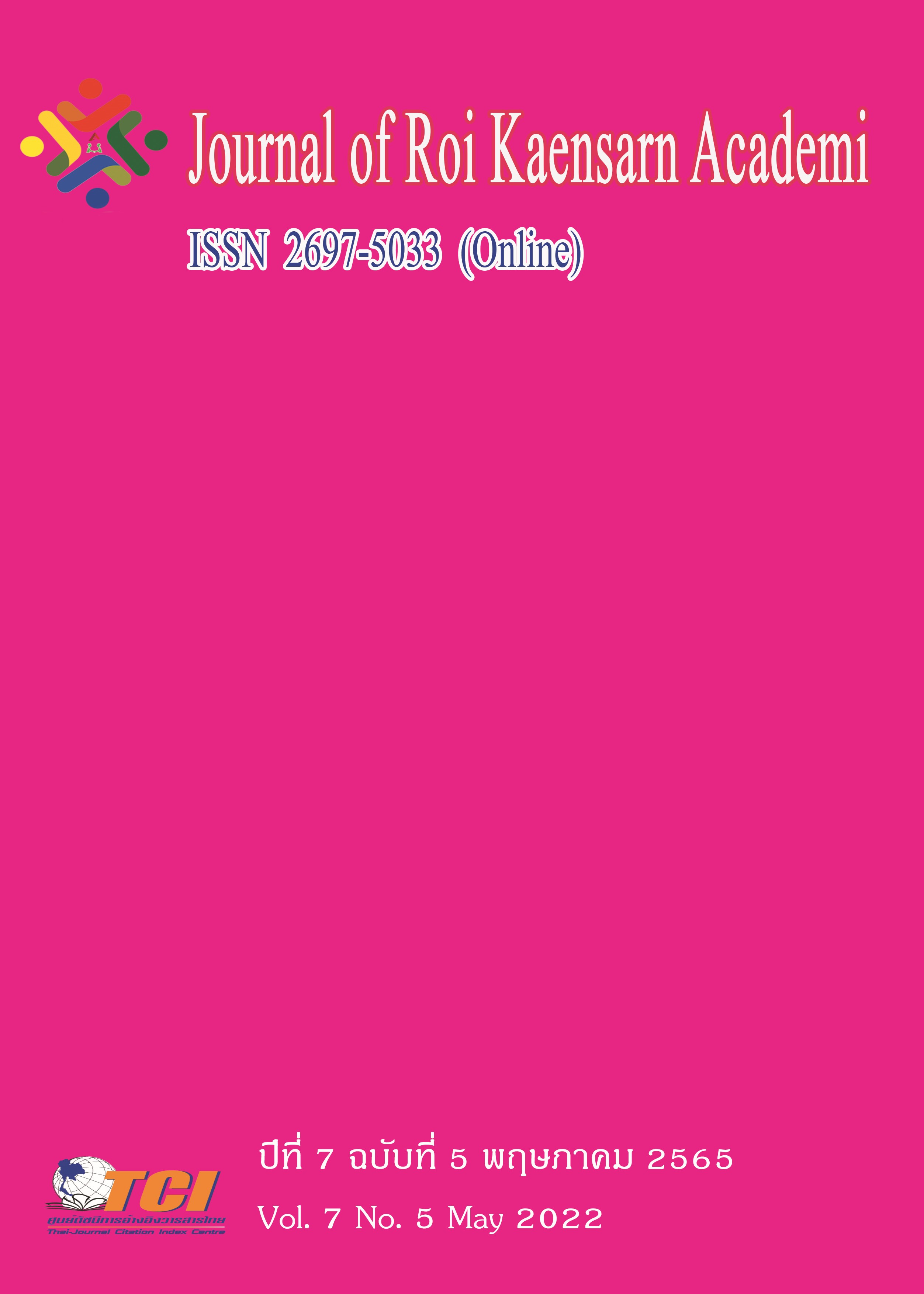English Speaking Problems of Engineering Students: A Case Study of Rajamangala University of Technology Thanyaburi
Main Article Content
บทคัดย่อ
This study aimed to investigate the problems of English speaking of the first-year engineering students at Rajamangala Univerisity of Technology Thanyaburi (RMUTT). The sample group consisted of 250 first-year students studying in the faculty of Engineering in the first semester of 2020 academic year. They studied in different majors: electrical, electronics and telecommunication, industrial, materials, and mechanical engineering. Regarding sampling, they were selected through a simple randaom sampling method. The instrument used in the research was online questionnaire containing 5 parts and 22 items. The statistics used for data analysis were percentage (%), mean (X̅) and standard deviation (S.D.). The reliability measured using Cronbach’s Alpha was .93. The questionnaire showed a high level (X̅ = 2.76, S.D.= 0.33) of students’ attitude towards speaking problems. The findings indicated that the overall problems occuring with the engineering students at RMUTT were at the high level. The most speaking problems the students faced were both concerned with knowledge like vocabulary limitation and applying grammar when forming utterances, and perception like being nervous or anxious and shy when speaking English.
Article Details
เอกสารอ้างอิง
Akkakoson, S. (2016). Speaking Anxiety in English Conversation Classrooms among Thai Students. Malaysian Journal of Learning and Instruction, 13, 63-82.
Bashir et al. (2016). Factor Effecting Students’ English Speaking Skills. British Journal of Arts and Social Sciences. Online. Retrieved January 3 2021 from http://www.bjournal. co.uk/BJASS.aspx
Chang, L. (1994). Quantitative Attitudes Questionnaire: Instrument Development and Validation. Manuscript submitted for publication.
Chinpakdee, M. (2015). Thai EFL University Students’ Perspectives on Foreign Language Anxiety. Silpakorn University Journal of Social Sciences, Humanities, and Arts, 15 (3), 61-90.
Gohil, P.P. (2013). English as a Global Language. International Journal for Research in Education, 2 (2), 1-7.
Hayriye, K. (2006). Teaching Speaking: Activities to Promote Speaking in a Second Language. Nevada: University of Nevada.
Huyen, N. T. (2003). Learning Vocabulary though Games: The Effectiveness of Learning Vocabulary Through Game. EFL Asian Journal, 5 (4), 49.
Hinkel, E. (2001). Building Awareness and Practical Skills for Cross-Cultural Communication in ESL/EFL. In M. Celce-Murcia (Ed.), Teaching English as a second or foreign language (3rd ed.). Boston: Heinle & Heinle, 443–458.
Hoonnoi, N. (2018). Problems and English Speaking Abilities of Thai Employee: A Case Study of Business. Online. Retrieved October 22, 2020 from https://scholar. google.com/
Khamprated, N. (2012). The Problems with the English Listening and Speaking of Students Studying at a Private Vocational School in Bangkok, Thailand. A Master’s Project at Arts in Teaching English as a Foreign Language, Srinakharinwirot University.
Krejcie, R. V. & Morgan, D. W. (1970). Determining Sample Size for Research Activities. Educational and Psychological Measurement, 30, 607-610.
Febriyanti, N.Y. (2012). The use of Multimedia Teaching AIDS to Improve the Quality of the Speaking Teaching and Learning Process at the English Grade Class of SMP N6 Yogyakarta in the Academic Year of 2011/2012. Online. Retrieved January 2, 2020 from http://eprints.ac.id./9431/2
ÖztÜrk, G., & GÜrbÜz, N. (2014). Speaking Anxiety among Turkish EFL Learners: The case at a state university. Journal of Language and Linguistic Studies, 10 (1), 1–17.
Panthito, B. (2018). A Study of the Problems of English Speaking Skills of the First Year Students at Mahachulalongkornrajavidyalaya University. Journal of MCU Humanities Review, 4 (2), 185-195.
Ratanapinyowong, P. (2007). Problems and Solutions in Teaching and Assessing English Skills in Thai Higher Education and the Need for Professional Development. Voices of Asia 2007 Symposium, MARA University of Technology (UiTM), Malaysia.
Richards, J. C. & Renandya, W. A. (2002). Methodology in Language Teaching: An Anthology of Current Practice. New York: Cambridge University Press.
Richards, J. C. (2009). Teaching Listening and Speaking: From Theory to Practice. Online. Retrieved November 8, 2020, from https://scholar.google.com/
Ritthirat, N. & Chiramanee, T. (2014). Problems and Obstacles to Developing English Speaking Skill of Thai University Students. Thesis, Prince of Songkla University, Faculty of Liberal Arts
Sasum, S. & Weeks, B. (2018). Why Some Thai Students Cannot Speak English Fluently? In Proceedings of RSU International Research Conference. Online. Retrieved May 4, 2018 from https://rsucon.rsu.ac.th/files/proceedings/inter2018/G4-IN18-021.pdf
Tasnimi, M. (2009). Affective factors: Anxiety. Journal of Pan-Pacific Association of Applied Linguistics, 13 (2), 117-124.
Vacav, H. (2009). Low Speaking Performance in Learners of English. Masaryk University Brno. Faculty of Education Department of English Language and Literature.
Zaigham, M. S. (2011). Language Starts with the Ear. The Fiat Pointer, 1 (4), 26-27.

